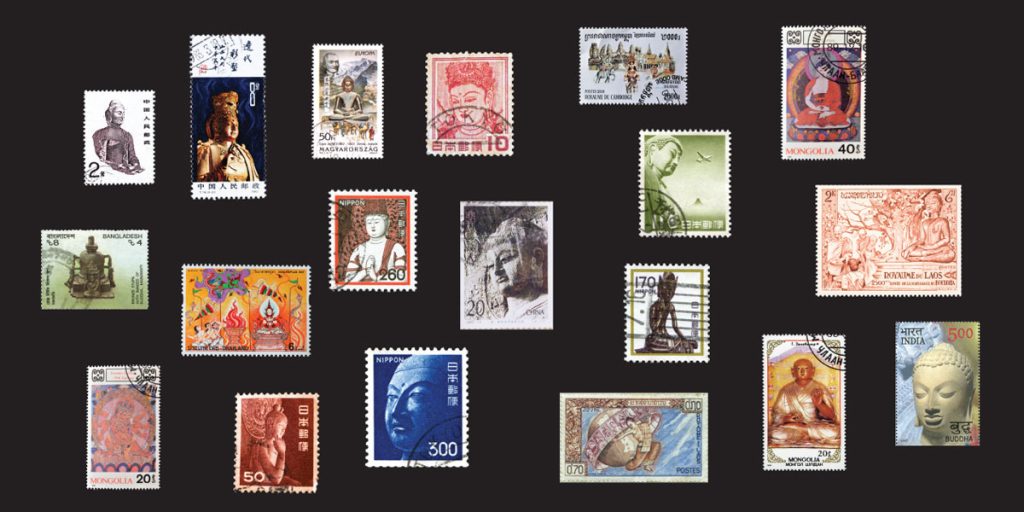For the dharma, globalism has been good—very good. One morning, you might read in the New York Times about the Dalai Lama’s latest speaking tour. A day later, in Minneapolis, Matthieu Ricard might be recording a podcast for On Being. Vacationing one summer in southwestern France, you could stumble across Plum Village, Thich Nhat Hanh’s European base. Plum Village, though, is only one small part of a network that includes residential centers on both coasts of the United States and branches as far south as Buenos Aires. Not to be outdone by Zen or the Tibetan schools, Vipassana has traveled far beyond Thailand and Myanmar to every continent except Antarctica. Buddhism hasn’t witnessed such explosive growth since the 6th century CE.
But what will happen to the dharma now, with nativism on the rise everywhere? In March 2017, India’s prime minister put his country’s Muslims on alert by appointing a militant Hindu priest as chief minister of the most populous state. A few months later, in Poland’s capital, Donald Trump told a cheering crowd, “ The fundamental question of our time is whether the West has the will to survive.” At the same time, India and China, both nuclear powers, nearly came to blows in a simmering dispute over a dirt road bordering Bhutan.
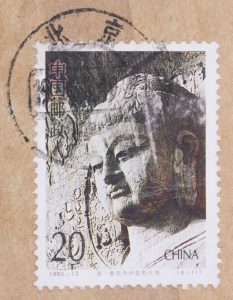
Not so long ago, it seems to me, the growing trend was an eagerness to become global citizens. Disappearing jobs and a loss of sovereignty help explain what happened after that, but the reversal has a deeper cause: globalism’s challenge to group identity. The world was culturally unprepared for a cosmopolitan civilization. It’s my feeling, however, that Buddhism now has a role to play in keeping that future alive. After all, once the dharma left the Buddha’s native land behind, his community was free to embrace the entire planet as its home—provided that his followers could find a way of rising to the challenge. To liberate themselves from old animosities, they had to invent a new kind of open self, one capable of treating differences not as existential threats but as opportunities to connect more deeply with the world.
Globalism’s modern advocates tried to sell it as unprecedented, but actually we’ve been here before—in, for example, the Mauryan dynasty. By the 3rd century BCE, India had become a cosmopolitan hub, its trade routes extending across the known world, its population swelling, its society increasingly rich, stratified, and specialized. The Mauryan capital, Pataliputra, was one of the world’s largest cities in its day, and on its streets you would have heard a cacophony of tongues spoken by people whose behavior and attire would have seemed foreign indeed—Persians with pointed beards and high hats, Bactrian traders in embroidered robes, Malaysians eating at street markets, even a few Greeks in tunics. Buddhists in Mauryan India, and in the dynasties that followed, struggled with a challenge very different from the one facing the dharma’s early followers. The challenge was no longer how to create their own community with common values and attitudes, but how to interact with the other, alien groups now living next door.
Related: When the Monks Met the Muslims
Let’s say that on your street in the capital, you notice a group of Zoroastrians gathering in the public square to conduct a fire ritual. At the same time, Chinese traders have arrived to pitch their food stalls in the same space. As an argument heats up, you decide you should retreat into the safety of your home. Once you close the shutters and lock the door, you can meditate in solitude until you feel that none of the outside din touches you. But retreating like that never sets anyone free—quite the opposite. So then, what are you supposed to do?
Once we stop identifying with any view, we find that harmony is always there.
One thinker with an answer was Nagarjuna, who lived in the second century CE. Clearly a careful observer of debates between philosophers of different schools, Nagarjuna could have taken sides with one faction or another. Instead, stepping back, he made a discovery: all of these debaters were helping to create their opponents’ arguments. Each position actually depended on the others for its content, and each was completely empty in itself—like the “hollow core,” he said, “of a banana tree.” Adversaries kept thinking that the stronger claim would finally bring their dispute to an end, but a resolution could only come from stepping outside of the debate. Nagarjuna called this “the relinquishing of views.”
When we turn to disagreements on the street, applying his insight doesn’t lead where we might expect. Nagarjuna doesn’t tell us to seek a common ground, a oneness that reconciles opposites. “Oneness” means “we’re all the same”; yet in a world of constant change, that condition of agreement can’t last for long. It couldn’t last in Nagarjuna’s time, and it won’t in the 21st century. Whether we are talking about systems of belief, nation-states, or ethnic groups, appealing to “oneness” lets us turn our eyes away from the endless variations that arise from impermanence. But if Nagarjuna is correct, then we don’t need agreement to live in harmony: once we stop identifying with any view, we find that harmony is always there.
Long before Nagarjuna, of course, emptiness enjoyed a special place in Buddhist thinking. In the Cula-sunnata Sutta (MN 121), for example, the Buddha describes emptiness as the most liberating of all states of consciousness, one he praises as “pure, superior, and unsurpassed.” But six centuries later, Nagarjuna radically transformed this idea by redefining emp-tiness as a property of everything, irrespective of the observer’s state of mind. Nothing, he insisted in his Seventy Stanzas on Emptiness, has svabhava or “own-being,” an autonomous existence. Instead, things exist only by virtue of their dependent origination (paticcasamuppada):
Without one, there are not many, and
Without many there is not one.
Therefore, dependently arisen entities [like these]
Have no characteristics [of their own]. . . .
Without a father there is no son, and without a son there is no father.
These two do not exist without depending on each other.–trans. Christian Lindtner
As these words stare up at us from the page, it’s hard to miss a point often overlooked in classes on Eastern philosophy: emptiness is all about relationships. And surely it was no accident that Nagarjuna’s influence grew just as the dharma expanded far beyond the Indian subcontinent—to the Parthian Empire in the west, the Tarim Basin in the north, China in the east, and the Malay Peninsula in the south. Emptiness helped make that happen.
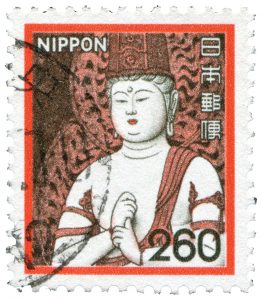 When we encounter people quite different from ourselves, especially when we find them close by, we may experience what feels like a loss—a loss of our sense of wholeness or unity. We become like exiles in our own land, and that sense of exile fuels much of the rage that is seen everywhere today. But according to Nagarjuna’s philosophy, we’ve made a mistake when we think that way: difference adds instead of subtracting. It makes our world larger than before, even though we often fail to notice this.
When we encounter people quite different from ourselves, especially when we find them close by, we may experience what feels like a loss—a loss of our sense of wholeness or unity. We become like exiles in our own land, and that sense of exile fuels much of the rage that is seen everywhere today. But according to Nagarjuna’s philosophy, we’ve made a mistake when we think that way: difference adds instead of subtracting. It makes our world larger than before, even though we often fail to notice this.
Scholars have written millions of words explicating Nagarjuna’s teachings, but this enlargement of the world is happening all the time. No sooner do we meet another person on the train or at the counter in a coffee shop than we have already been changed. We might prefer to think that we’re still the same, a permanent self that can stand apart from events as they unfold. But Nagarjuna’s logic tells us that’s impossible because the self is just the sum of its relationships, which are also empty in themselves. Even what we call self-awareness comes via the detour we take when we encounter others, who show us to ourselves from a new angle. The differences we find in our world, then, offer us the priceless opportunity to become something more than we are now. But that’s exactly why strangers nearby can appear so threatening: they force us to confront our own openness. We can always try to close that openness down, but unhappiness will follow. Our only alternative is to embrace the endless process of becoming.
The retreat into nativism across the globe shows how unready many of us were to take that step. It may be helpful, though, to recall an earlier moment of globalization, when India, then the center of the world, drew travelers from faraway places. One of the most important of these 11th-century travelers was Marpa, a Tibetan farmer’s son whose longing for spiritual wisdom took him to India and Nepal.
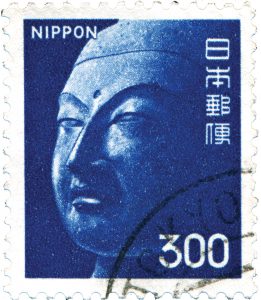 In his 16th-century Life of Marpa, a rich interweaving of fiction with fact, the Kagyu master Tsangnyön Heruka makes it clear that foreigners in India had a hard time. On the first leg of Marpa’s trip, he and a fellow Tibetan attend a lecture by a guru from Nepal who openly expresses his reluctance to share dharma “secrets” with these uninitiated visitors. “Don’t worry,” another guru chimes in, “Tibetans are like oxen. They won’t understand a word.”
In his 16th-century Life of Marpa, a rich interweaving of fiction with fact, the Kagyu master Tsangnyön Heruka makes it clear that foreigners in India had a hard time. On the first leg of Marpa’s trip, he and a fellow Tibetan attend a lecture by a guru from Nepal who openly expresses his reluctance to share dharma “secrets” with these uninitiated visitors. “Don’t worry,” another guru chimes in, “Tibetans are like oxen. They won’t understand a word.”
Later, Marpa’s poor command of Sanskrit holds him back, and finally he runs out of funds for additional instruction. His guru doesn’t offer lessons for free, but tells him to seek out Naropa, the abbot of Nalanda University and the rare pandit who won’t ask to be paid. After many days Marpa reaches Nalanda, only to find that Naropa left some time ago and now lives in a city far away. When Marpa finally catches up with him, expecting the same old runaround, Naropa warmly welcomes him instead. But why was his response so different from the reaction of the other gurus?
In fact, Naropa’s whole life had prepared him for his encounter with this foreigner from Tibet. Once a brilliant scholar, revered by everyone, Naropa had gone through a midlife crisis so severe he left his prestigious position behind, setting off to meet someone he had glimpsed only in his dreams, a dissident monk named Tilopa. Failing to find him, Naropa grew acutely depressed, but just as he was going to kill himself, the maha-siddha Tilopa appeared. By night a procurer for a prostitute and by day a laborer grinding sesame paste, Tilopa represented everything Naropa had shunned on his way to the top. But the Tibetan sources underscore that only Tilopa could have guided him to the open, empty self.
And now Naropa had to help a man Tsangnyön Heruka’s biography portrays as almost superhuman in his resolve. The narrative tells how Marpa faces challenge after challenge; finally, Naropa sends him to receive teachings from another guru, Kukkuripa, who lives alone on an island in the middle of a poisoned lake.
Marpa finds no one else on the island except a “human figure” crouching under a tree and covered with feathers like a bird. When he asks where Kukkuripa can be found, the bird-man angrily orders him on his way, calling him a “flat-nosed Tibetan.” But as Marpa sets off again, he realizes the bird-man’s true identity, and when he goes back, Kukkuripa joyously offers him instruction.
Tibetan seekers and Indian sages—they all had to undergo a profound transformation before they could truly recognize each other. And that transformation required them to let go of any fixed identity. Marpa eventually journeyed home to found the Kagyu school, and this school played a central role in the birth of the “Tibetan Buddhism” we’re familiar with today. But his own experience in India shows that there can really be no such thing, any more than Zen is strictly Japanese or Chan the property of China. The dharma breaks through every wall we erect because its ultimate goal is compassion, but compassion arises only when we embrace the foreigner as the self. And on the occasions when the Buddha’s followers have forgotten this lesson, suffering always follows. One example is the Zen establishment’s support for Japan’s invasion of China in Word War II. More recently, Buddhist-majority states, long tolerant of differences, have launched terrifying crusades to rid themselves of “foreign” elements.
We really have no choice except to trust, and trust may not be as we often assume, something events can undermine.
Outside observers quite correctly use the term “ethnic cleansing” to describe the persecution of Myanmar’s Rohingya. But the problem is much bigger than this tragedy, since it now threatens to engulf much of Buddhist Asia. Thai authorities recently defrocked a monk for preaching violence against Muslim citizens, while Sri Lankan bhikkhus have whipped up anti-Muslim violence there. These monks and their supporters see Islam as the dharma’s mortal enemy, when the real danger is their own attachment and fear—attachment to an imaginary “we” and fear of an imaginary “them.” And nativist politics, which depends on exactly these distinctions, has multiplied many times over the avidya, the ignorance, of the rebrands.
Related: Who is the Real Aung San Suu Kyi?
Political uses of the dharma go a long way back. The Buddha himself enjoyed the support of Bimbisara, the Magadhan ruler, as well as that of Bimbisara’s patricidal son, Ajatashatru. Indeed, the dharma attracted royal patronage throughout its time in India as it did in the rest of Asia as it spread. It’s also true that Chinese and Japanese rulers sometimes bent the sangha to their will by promoting, say, one teacher at the expense of rivals, or by driving nuns back into secular life, or by licensing ordinations. Yet the Magadhan kings and the Chinese emperors have vanished from the earth, while the dharma remains a going concern because it knows no boundaries. Magadha couldn’t pick up and go, but the sangha could—and did.
If the dharma is bigger than the modern nation-state, then how has it organized itself? The answer is that Buddhism always relies on transmission or lines of descent, starting with the person of the Buddha. In the Zen school, the lines of descent traverse borders and even continents, connecting men and women across ancient India and Pakistan, as well as China, Korea, and Japan. Bodhidharma, who brought Zen to China, may have been a Persian, and Dharmakirti, the great Yogacara sage, was probably born in Java. Some critics have charged that transmission in Zen plays an oversize role, but interpersonal connections have been Buddhism’s lifeblood—connections between guru and shishya, acharya and sadhaka, roshi and hassu. Monasteries, too, often view themselves this way, as progeny of a common “mother” temple.
We might visualize these lines of descent as the spokes of a great wheel stemming from a common hub—the Buddha—and radiating out in all directions. But unlike spokes, which meet only once, the different transmissions have never stayed apart. The reality has always involved all kinds of lateral connections, borrowings, and exchanges. For this reason, the best image of the dharma’s unfolding wouldn’t be the wheel after all, but a net much like the image that recurs throughout the Flower Ornament Sutra (Avatamsaka Sutra).
In the sutra, when the seeker Sudhana asks the Bodhisattva of Wisdom, Manjushri, how to achieve complete enlightenment, even Manjushri can’t tell him. Instead, he sends Sudhana on a journey to meet with other enlightened men and women, including the monk Sagaramegha (“Ocean Cloud”). When Sudhana arrives at Sagaramegha’s home, the monk describes his moment of awakening after 12 years meditating on the boundless sea. At the end of those years, he had asked himself, “Is there anything vaster than this?” Thereupon, Sagaramegha learned the answer:
While I was engaged in these thoughts, an enormous lotus from the bottom of the ocean appeared before me. . . . It was covered by a net of a million various jewels . . . blazing with [a] great splendor. . . . That great lotus is born from the transcendental roots of goodness of the enlightening beings; it appears everywhere.
–trans. Thomas Cleary
The lotus here should come as no surprise: it’s the dharma’s most enduring symbol. But the sutra adds an unexpected detail: covering the lotus is a net of jewels, every jewel reflecting all the others. This passage symbolizes a major shift in the way Buddhists understood the dharma. Like Manjushri, Sagaramegha knows he’s only one of countless jewels in the net. That’s why he also sends Sumedha on his way to meet another 51 adepts. They include people from all walks of life, even a courtesan, as well as kings and goddesses. All of them are deeply awake, and each is awake in a new and different way.
At 1,500-plus pages, the Flower Ornament isn’t likely to become a bestseller in the Twitter age. It offers, though, a model of community unlike any other. Nation-states may be dominant in the world as we know it, but the Flower Ornament suggests we take a bigger view. Globalism 1.0—the ancient Mauryan version—probably failed because the world still lacked the communications network it enjoys today. In our day, Globalism 2.0 is falling apart for a different reason. We have the technology but misunderstand what connects us as people: not just our similarities but—even more—our differences.
Followers of the dharma might assume that Buddhists everywhere share some key idea that makes them all the same. Similarly, as Americans, we want to believe that some Americanness allows us to transcend our diversity. But the message of the Flower Ornament is the very opposite: we each use the dharma to create our own, one-of-a kind “buddhaworld.” We each reinvent the dharma for ourselves. And in the same way, we as citizens have an “America” that exists only in our minds. Yet every buddhaworld, and every America, mirrors all the others, and all are joined together by the aspiration to connect. at’s why both “Buddhist” and “American” are still living ideas: the emptiness at the core of both identities allows them to be shared.
When we try, though, to impose on others our particular vision of the dharma, we make real community impossible because we close off the multiplicity of views that none of us can actually escape. And we can’t escape because this multiplicity arises from the nature of sentience itself: we can perceive the world only from where we stand, and no two of us stand in exactly the same place. Rejecting the myth of uniformity, the Flower Ornament joyously declares the existence of countless realities. And it affirms that every reality will lead to complete liberation—provided we acknowledge that no one reality can encompass the whole truth.
Of course, in real life such radical openness comes with a certain risk, because people may not respond in kind. You could reveal your deepest feelings to a friend, only to learn later that the same friend has made fun of you. Or, on an even larger scale, after a head of state has signed a nonaggression treaty, foreign troops may invade overnight. Now, as in Mauryan times, openness is the biggest gamble of them all—a gamble that people sometimes lose, as history clearly shows. Yet we really have no choice except to trust; and trust may not be, as we often assume, something that events can undermine. What Zen calls the “trusting mind” has, indeed, nothing to do with the way others act.
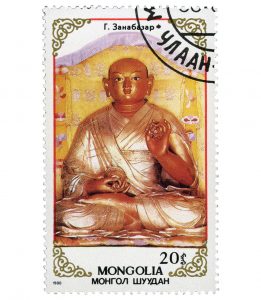 A Zen story that makes this point involves the 9th-century master Joshu Jushin (Chinese, Zhaozhou Congshen). He was widely regarded in the Tang Dynasty as one of the greatest Chan practitioners, yet few people understood what made him “great.” Following the death of his teacher, Nansen, Joshu was expected to become the abbot of the temple where the two of them had practiced for decades. Instead, Joshu set out on the road, encountering masters across the land and rubbing elbows with their students. Like everyone who has a reputation, Joshu was often welcomed with respect, but sometimes he met with skepticism.
A Zen story that makes this point involves the 9th-century master Joshu Jushin (Chinese, Zhaozhou Congshen). He was widely regarded in the Tang Dynasty as one of the greatest Chan practitioners, yet few people understood what made him “great.” Following the death of his teacher, Nansen, Joshu was expected to become the abbot of the temple where the two of them had practiced for decades. Instead, Joshu set out on the road, encountering masters across the land and rubbing elbows with their students. Like everyone who has a reputation, Joshu was often welcomed with respect, but sometimes he met with skepticism.
In this story, just after Joshu arrives, a monk challenges him: “I’ve heard that you closely follow Nansen. Is that really true?” In essence, the monk says to Joshu, “You’re supposed to be your teacher’s equal, but you look unexceptional to me.”
To this slight, Joshu cryptically replies, “Chinshu produces a big radish.”
Joshu could have pulled rank on the monk. He might have said, “Everyone in China knows who I am.” Or he could have answered with a challenge of his own: “I’ve seen the Clear Light face-to-face. Have you?” Instead, Joshu’s attunement with the trusting mind allows him to discern the insecurity behind his host’s combativeness. Joshu, after all, has intruded on the monk’s home turf. But Joshu’s reply is curious because he doesn’t downplay his foreignness. Instead, he emphasizes it by referring to his place of birth, Chinshu, a part of China known for growing radishes.
We could say the big radish represents the world, but Joshu prods the monk to find in himself something even bigger than any world—an indestructible openness. Joshu wants the monk to recognize that intruders in our lives are never the real problem: the problem is our self-ignorance. Nothing people do can earn our trust—or, for that matter, betray it—because the trusting mind is always right here, just below the surface of our thoughts, as the unspoken knowledge of our connectedness. This knowledge, the real dharma net of jewels, allows us to find in every stranger we meet an undiscovered part of ourselves.
The story doesn’t explain what the monk does next. For us, though, once we’ve uncovered the trusting mind, our lives just get bigger and bigger. Globalism 3.0 may not arrive for many centuries, or it may happen sooner than we expect. But it will have to start with Joshu’s radish.
Thank you for subscribing to Tricycle! As a nonprofit, we depend on readers like you to keep Buddhist teachings and practices widely available.
